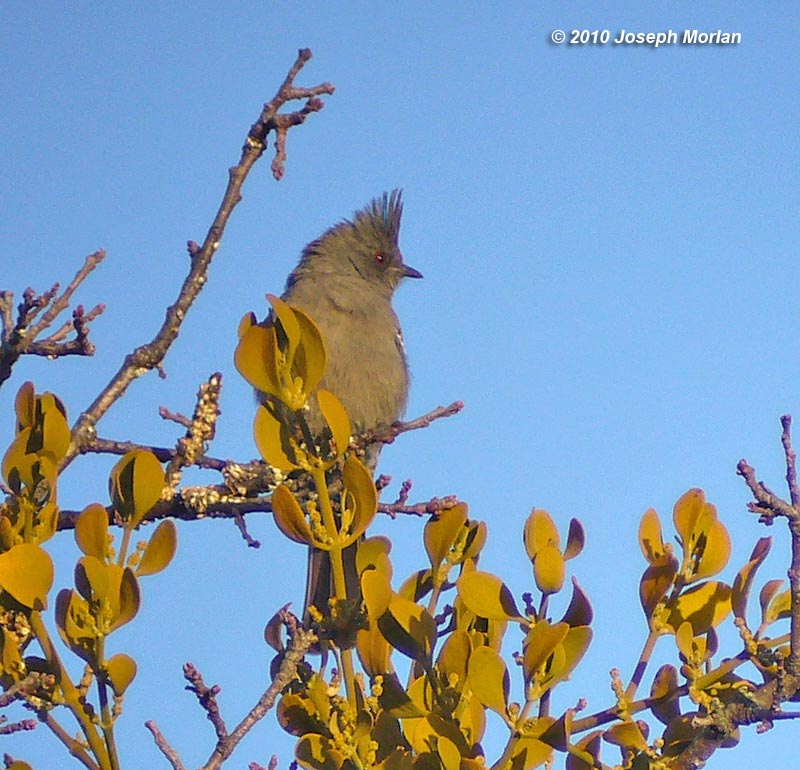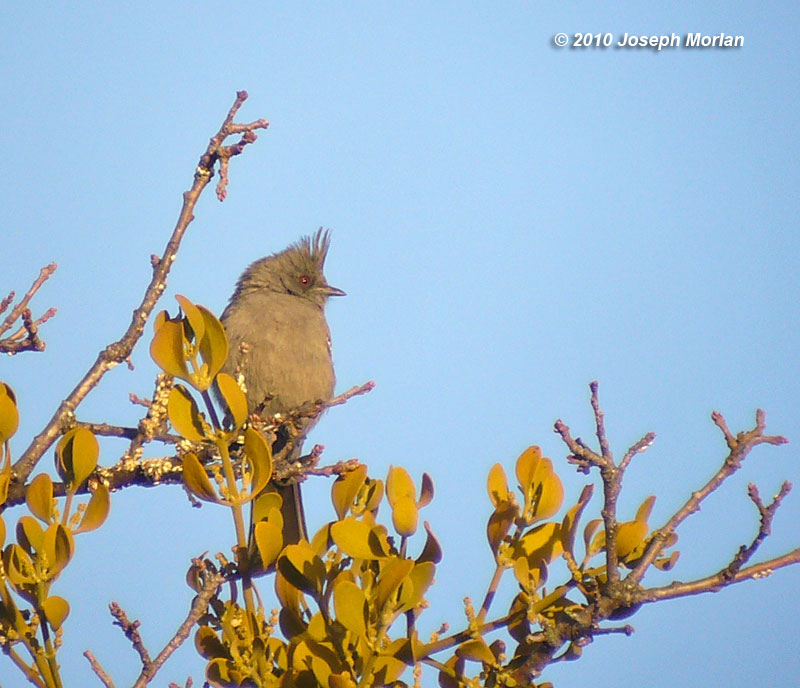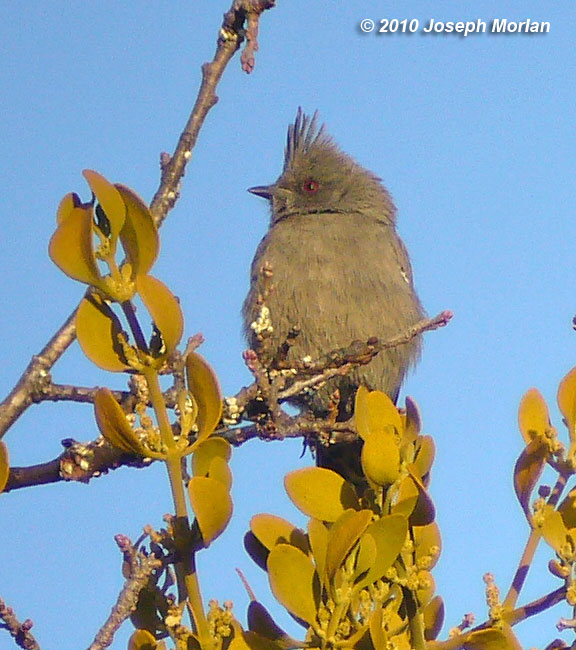

 We were
fortunate to be able to visit this preserve owned by Stanford University, where this female Phainopepla was known
to be wintering. This species is very scarce along the immediate coast in Northern California. It usually winters
in the deserts.
We were
fortunate to be able to visit this preserve owned by Stanford University, where this female Phainopepla was known
to be wintering. This species is very scarce along the immediate coast in Northern California. It usually winters
in the deserts.This species is a specialist on the waxy berries of Mistletoe which you can see in this photo. Although its leaves have chlorophyll which can produce food by photosynthesis, Mistletoe is a parasitic plant, rooting into the living branches of host trees. Its berries are indigestible to most birds. The berries pass through the bird's digestive tract and stick to branches of host trees where they take root. Unlike other birds, the Phainopepla has a strong stomach acid which is capable of breaking down the waxy coating of these berries allowing it to digest the seeds.
It supplements its diet with insects which it often catches mid-air like a flycatcher. In fact it is a member of the Ptilogonatidae, a Neotropical family usually called Silky-flycatchers. The Phainopepla is also unusual in that it has been documented to nest twice a year in different places. It may nest in the foothills during the summer and in the deserts during the winter.
The male is a shiny blue-black bird, while the female seen here is a more drab gray color. Both sport a bushy crest and both have deep red eyes. The name is pronounced FANE-oh-PEP-la and is said to be from a Greek word meaning "shining robe." If you find yourself stumbling over the name, you could use the alternate name suggested by the famous ornithologist Elliott Coues. He called it the "Shining Blue-black Silky Flysnapper."
Digiscoped with Panasonic DMC-LZ5 | Nikon FieldScope 3 | 30X WA | hand-held (no adapter). Special thanks to Leonie Batkin for arranging access for us at Jasper Ridge.